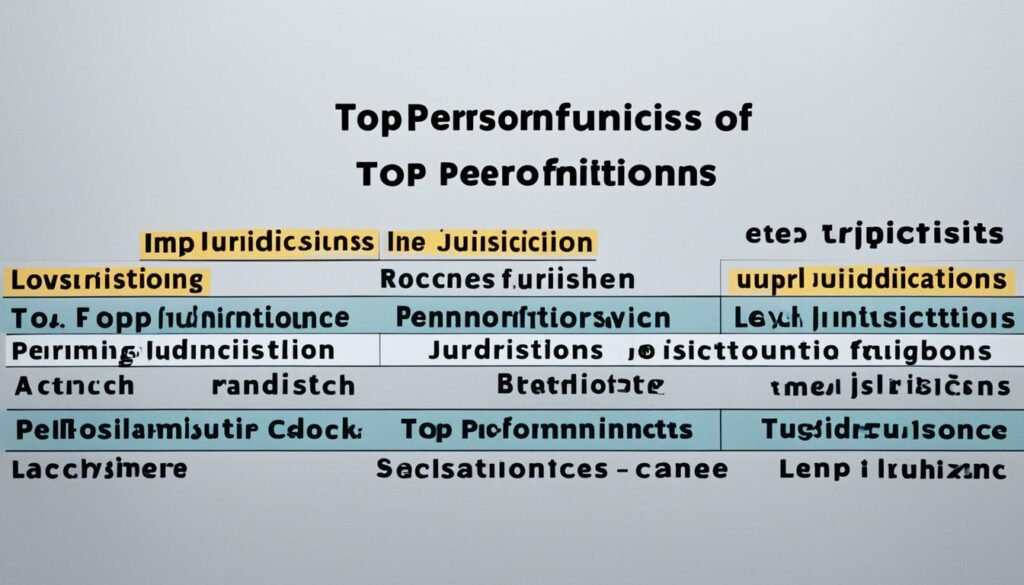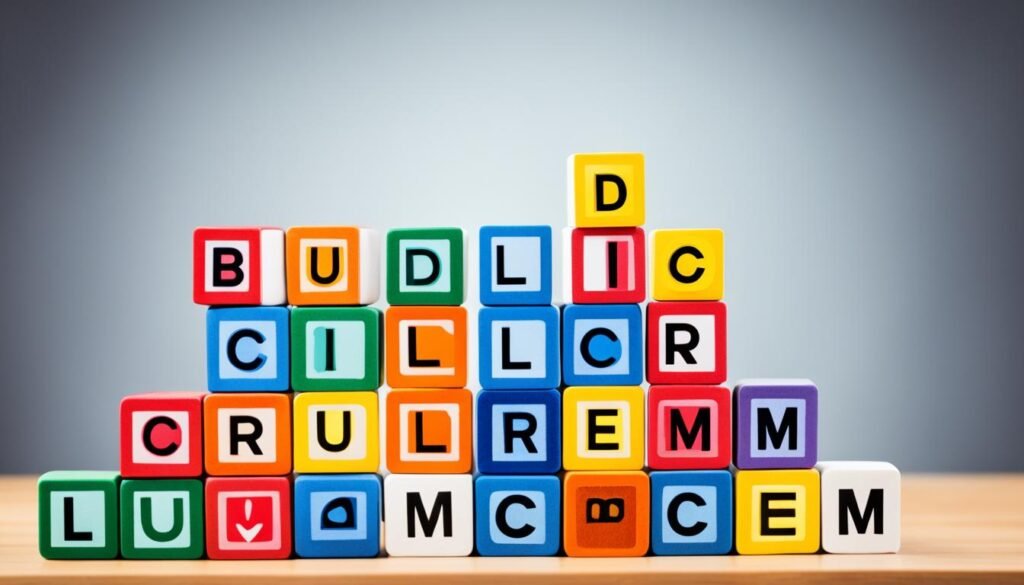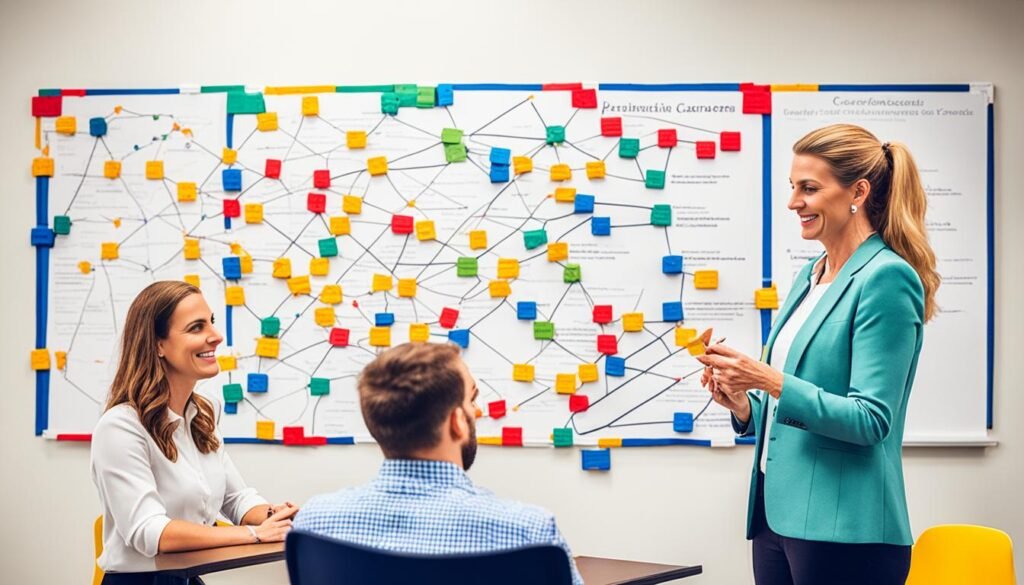Career Education System Strategies The “9 Building Blocks for a World-Class Education System” comes from the National Center on Education and the Economy (NCEE). It collects over 25 years of study on the best education systems worldwide. This study aims to show the strategies used by leading countries to do better than the United States.
Also Read: Empowering Futures: The Evolution Of Career Education Systems
Key Takeaways
- Top-tier education systems focus heavily on technical and vocational education and training (TVET) in their career education plans.
- It’s key to have well-funded TVET programs for matching skill development to what industry needs, boosting workforce success and the economy.
- Good education systems have a setup that mixes local school control with strong oversight. This ensures everyone gets a high-quality education.
- They keep investing in research, data, and policies that use this information. This pushes them to always get better.
- Getting students ready for successful careers needs a mix of book learning, practical skills, and what employers look for.
Also Read: Navigating The Future: Career And Technical Education Strategies
Importance of Research on Education Systems
Global labor market global integration and automation are key trends. They change the way the world works. This makes it crucial for education systems to change. They need to prepare students for the future economy.
Also Read: How Career And Technical Education Is Adapting To Industry Changes?
Global Labor Market Integration
Today, workers worldwide are in competition because of global integration. The US, as a high-wage country, must stay competitive. This ensures a good life for its people. Education is key. It equips students with the skills to succeed globally.
Also Read: The Role Of Technology In Shaping Education Degree
Automation and Job Competition
Automation is changing the global labor market too. Machines are taking over many jobs. Workers need new skills to work with these machines. Education must change too. It must prepare students for jobs of the future.
Also Read: How To Choose The Best Education Degree Program For Your Goals?
Adapting Education Systems for Economic Success
The goal is to learn from countries that are doing well. By studying them, we can improve our education. This will help students worldwide do better in the future job market.
Selecting Top-Performing Jurisdictions

In 1989, the NCEE researchers started looking at countries outperforming the U.S. in student success, fairness, and efficiency. They wanted to find places where students did highly on international tests like the PISA. It focused their efforts on areas with strong education systems.
Focus on PISA Rankings
The PISA scores helped the NCEE team compare educational success globally. It highlighted the top countries and regions, showing models of success in fairness and efficiency. This let them spotlight special places that did well for all students.
Top 10 Large Jurisdictions
The NCEE examined the 10 biggest countries or provinces that stood out in the PISA tests. Doing this, they could study well-working systems serving large, diverse student bodies. It gave them ideas on bringing success to many students.
Coherence and Performance of Education Systems

Good education systems work together as one, not a bunch of separate activities. Every part helps the others, making everything stronger. The NCEE researchers say this connection is a key feature of successful education systems globally.
Effective Systems as Harmonious Parts
Well-functioning education systems are all about being coherent and connected. Curriculum, teacher training, tests, and how schools are run all move smoothly to make things better. By working together, they make sure the whole system pulls in the same direction.
Fractured Governance in the United States
But in the United States, things are often not working so well together. There are many people making decisions at different levels, and they might not agree. Because of this, the policies and actions can be all over the place. This makes the system less effective for everyone.
Conflicting Incentives and Practices
Take education policies and practices for example. They might focus on different things, like test scores, getting into college, or getting out to work. Sometimes, these goals conflict. This makes it harder for the system to meet everyone’s needs.
Methodology for Adaptation, Not Wholesale Adoption

The NCEE’s research helps take good ideas from top education systems and make them work for other places. It’s not about copying everything, but about picking what fits best. This is because every area has its own special needs and ways of doing things.
Creative Process of System Design
Top education systems are very complex. They didn’t get that way overnight. Instead, they were carefully built over many years. Each part of the system, like rules and ways of teaching, matches the community it serves. It’s not as simple as just copying what another place does.
Compatibility with Local Context
Making ideas from great systems work somewhere new needs a lot of care. It means understanding everything about the place, from its culture to its problems. Just bringing in ideas without thinking about how they fit won’t do much good. Adapting those ideas is crucial for them to actually help.
The NCEE’s approach is all about adapting what works, not copy-pasting. They help leaders in different areas use the best ideas wisely. This way, the changes made really suit the community and its needs.
Early Childhood Education

High–ranking education systems know how vital early childhood education (ECE) is. They see it as the root of later learning and success. They recognize that learning starts at birth, not just in school. Good ECE builds the mental, social, and emotional skills kids need for the future.
Foundation for Later Learning
The early years are key for a child’s brain to grow. This shapes their lifelong learning and success. By funding strong ECE, these systems make sure every child can get the education they need to flourish, no matter their background.
Cognitive, Social, and Emotional Skill Development
The best ECE spots focus on whole child growth. They help kids with cognitive, social, and emotional abilities. This way, they get a great start in school and life. They learn to handle their feelings, make friends, and think clearly.
Mitigating Socio-Economic Disadvantages
Top systems see the difference socio-economic background can make in learning early on. So, they aim for fair ECE for all. This move helps lower the impact of unfair starts. It gives every child a solid beginning to fully thrive.
Career Education System Strategies

Top education systems around the world focus on technical and vocational education and training (TVET). They see it as a vital part of their career education approach. TVET programs are essential for giving students the skills and knowledge they need to excel in today’s job market and boost economic productivity.
Technical and Vocational Education and Training (TVET)
TVET offers students a way to learn technical and vocational skills for jobs in many sectors. It includes real-world practice, certifications, and chances for apprenticeships or internships. This helps students smoothly move from studying to working life.
Aligning TVET with Industry Needs
Good career education links TVET closely to local and regional businesses’ needs. This means talking with employers to spot skill gaps and new job trends. Then, schools and training programs adjust what they teach and how, to fit what businesses are looking for.
High-Quality and Well-Funded TVET Programs
The best education systems invest a lot in high-quality TVET. They make sure students can learn with top-notch facilities, equipment, and from experienced instructors. This dedication to vocational training is key in creating a skilled workforce and pushing economic growth.
Teacher Quality and Professional Development

Top-tier education systems know that high-quality teaching is vital for their success. To attract, train, and keep the best teaching talent, they focus on three main areas.
Attracting Top Talent to Teaching
The best countries see teaching as a desirable and respected profession. They offer competitive salaries, appealing working conditions, and robust career advancement opportunities. They work hard to recruit and retain talented individuals. This means ensuring the best and brightest help shape the future.
Rigorous Training and Continuous Development
Future teachers go through rigorous, practice-oriented training in these places. They learn a lot about their subject and how to teach it. In the classroom, teaching doesn’t stop. They get ongoing professional development to get better at what they do. It’s all about lifelong learning and innovation.
Conducive Working Environment
In these places, the working environment for teachers is supportive and collaborative. There are ample resources, reasonable workloads, and strong administrative support. This makes it easier for teachers to focus on teaching and learning. They don’t have to worry too much about admin work. It inspires them to grow and thrive in their careers.
Curriculum and Assessment

Top education systems always strive to keep their curriculum and ways of measuring progress updated. This helps them stay in tune with what society and the job market need. So, they are always working on making their curriculum better and their methods of checking student learning improved. This is what sets them apart as leading systems worldwide.
Updating Curriculum for Evolving Needs
Education systems should change what they teach to meet the new demands of jobs today. They do this by keeping an eye on what skills and knowledge people need to work. By doing this update regularly, students learn what they must know and can think creatively and solve problems well. This makes them ready for jobs that rely more and more on being quick to adjust and using new technologies.
Balancing Knowledge, Critical Thinking, and Creativity
Great education systems carefully mix teaching solid facts, teaching students to think deeply, and letting them be creative. This mix helps students fully understand important topics. But it also makes sure they know how to use what they learn in new and smart ways. This way, students grow ready to help their communities and shine in their future work life.
Assessments for Improving Teaching and Learning
High-performing education systems stand out in how well they check what students learn. They have many ways to do this, all meant to give useful feedback to both students and teachers. This feedback helps in making teaching better and in crafting a curriculum that really works. Tackling these checks head-on ensures students gain all the important knowledge and skills they need for their future achievements.
| Key Curriculum and Assessment Strategies | Description |
|---|---|
| Curriculum Adaptability | Regularly reviewing and updating academic programs to address evolving knowledge and skill requirements |
| Balanced Approach | Designing curricula that balance the development of essential knowledge, critical thinking, and creativity |
| Comprehensive Assessments | Using a variety of formative and summative assessments to measure learning outcomes and inform instructional improvements |
| Data–driven Improvement | Continuously evaluating the effectiveness of teaching and learning processes to enhance student mastery of essential knowledge and skills |
Governance and Accountability

Great education systems have a way of managing schools that works well. They put some power in the hands of local people, while still checking that everything is fair. This lets local communities and schools make choices for their students. They use data and measuring tools to keep things fair and top-quality.
Decentralized Management of Schools
The best education systems let local leaders make some decisions. This helps schools and communities fix their own problems with education. This way, teachers and people involved can see direct effects of their work. It makes them care more about doing the best job they can.
Robust Accountability Systems
Good education systems also watch closely to make sure the standards stay high. They keep track of how students are doing, how well teachers are teaching, and how the schools are performing. These checks make everyone work hard to keep getting better. They focus a lot on making sure students get what they need to succeed.
Policy Coherence and Alignment

Top education systems work well because everyone agrees. This agreement happens at all levels, from making big policies to what happens in class. Everyone works together to make sure students get the best learning experiences.
When policies, what’s taught, how it’s tested, and how teachers learn all match, education improves. This makes a smooth change for students and teachers. High-quality teaching comes from this cooperation, helping students do well.
The best education systems match what everyone does. This agreement makes sure learning is the best it can be for everyone. It helps teachers and students do their best.
Also Read: Career Education Systems: Elevate Your Career
Information, Research, and Data-Driven Improvement
Top-notch education systems know how vital it is to gather high-quality information. This info helps them shape better education policies and methods. They invest in research and making decisions based on solid evidence. This approach lets them adjust and improve to meet the changing needs of students, teachers, and the community.
Investing in Research
Great educational systems put a lot of money into detailed research. This research covers many areas, like how to teach and what curriculum works best. It also looks into the effects of various education policies. The information they gather helps find what really works. It also shows what hurdles the local educational scene faces.
Data Collection and Analysis
Having solid data collection and analysis is key for making decisions in excellent education systems. They set up strong systems to collect data on how students do, how teachers perform, and more. They then study this data closely. That way, leaders can choose the best steps for improvement with evidence in hand.
Evidence-Informed Policy and Practice
The knowledge from research and data isn’t just left on a shelf. It’s used to shape new policies and put them into action. This way, decisions are based on proven facts. Systems can focus on keeping up great results for students and communities. They keep checking and improving their work based on this solid evidence.
FAQs
Q: What is the importance of a career education program?
A: A career education program helps individuals develop the necessary skills and knowledge to reach their career goals and be successful in the workplace.
Q: How can a career education program help students in exploring their interests?
A: Career education programs provide students with an overview of various career paths and help them explore different fields to identify their areas of interest.
Q: What role do education providers play in career education?
A: Education providers offer guidance and support to students in developing skills and obtaining the readiness skills needed for employment.
Q: How can a career education system help in addressing employment barriers?
A: A career education system can help individuals identify and overcome employment barriers by providing them with the necessary tools and support to strengthen their employability.
Q: What is the importance of workplace engagement in the context of career education?
A: Workplace engagement is crucial in career education as it allows individuals to demonstrate their commitment, readiness skills, and desire to succeed in their chosen field.
Q: How can government agencies contribute to the success of a career education system?
A: Government agencies can play a central role in approving and implementing career education strategies to ensure that individuals have access to quality education and career guidance.
Q: What are some common challenges faced by individuals in pursuing their career goals?
A: Some common challenges include lack of access to education providers, limited guidance and support, and barriers to employment opportunities.
Q: How can individuals make informed decisions about their career paths?
A: Individuals can make informed decisions by participating in career education programs that provide them with a clear overview of various industries, job roles, and skills required for success.





